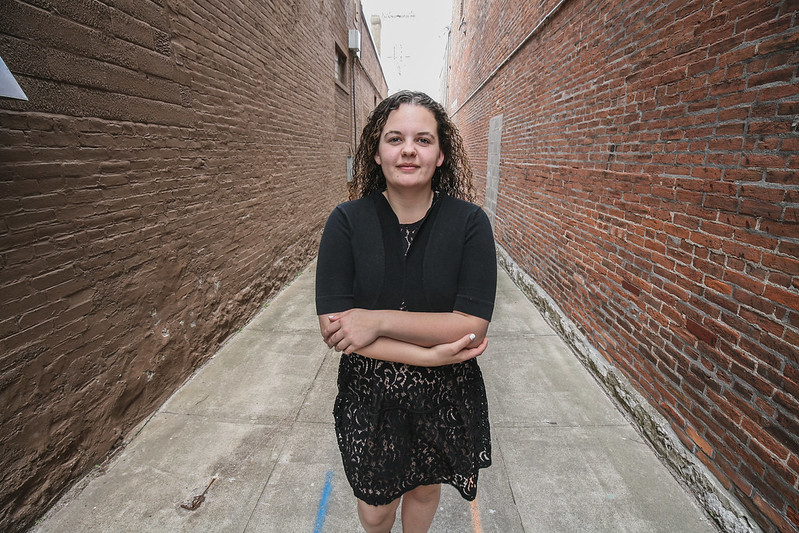13 June 2016
For about a decade, Canon offer SLR camera users two high-quality ultra-wide zoom lenses: the 17-40/4 and the 16-35/2.8. The 16-35/2.8 is a full stop wider in aperture, and also about twice the price. I used the 17-40 for years, which worked great outdoors in adequate light, but, with the f4 aperture, was limited for indoor use, such as for museum exhibits and indoor architecture. The wider f2.8 aperture would help, but what I thought would really be great was image stabilization on the f4 lens.
I must not have been alone in thinking such a lens would be useful, as in 2014 they introduced 16-35/4 ultra-wide zoom lens with image stabilization, for just a couple hundred dollars more than the 17-40/4.
At 16mm

At 35mm

Image Stabilization
The image stabilization works well for moderately dim interiors, like typical museum exhibits:


When the interior lighting is extremely dim, the lens’s image stabilization might not be enough to attain a blur-free handheld photo, but it’s still better than nothing:

Of course, image stabilization only helps motion blur introduced on the photographer’s side. If your subject is moving, having the f2.8 aperture would be more helpful. But for reasonably static scenes, Canon purports that the image stabilization unit compensates for up to four stops worth of aperture, far exceeding what the f2.8 lens offers without image stabilization.
Portraits
One typically does not reach for an ultra-wide lens for portraits, but sometimes the focal length works out, both at the 35mm end:

and at the 16mm end:

I do think that the extra 5mm on the 17-40 lens is more useful than the extra 1mm on the 16-35 lens, but the image stabilization more than makes up for than in overall value.
11 August 2014
I needed a camera lens longer than anything I presently own for some event photography, and decided to rent a Canon 300/4 from LensRentals.
One frequently-cited advantage to using either Canon or Nikon SLR cameras is that they are so common that you can easily rent whatever you need that you don’t own. I’ve never been able to enjoy that alleged truth locally, as I’m not aware of any shop that rents camera equipment within a reasonable driving distance from home. But over the past few years, renting camera equipment online has taken off in popularity, with LensRentals being one of the more well-known providers.
I created my LensRentals.com account on a Wednesday afternoon and placed the order to receive the lens on the following Monday and to return it the Monday after that. In filling out the shipment form I asked them to send the lens to my customary third-party shipment service provider, who is authorized to sign to receive packages on my behalf. LensRentals contacted me and asked if they could instead ship directly to a FedEx location, with the reason being that once the package leaves the hands of FedEx, regardless of who signed for it, I become personally liable for whatever happens to the package. So they prefer if it goes directly from FedEx to me.
The package was delivered on schedule to a nearby FedEx location. The lens came lightly wrapped in bubble-wrap, placed inside its standard-issue Canon carrying case, with that placed inside a close-fitting block of foam rubber. The lens was very clean; not mint and pristine, but showing only very light signs of use. I would have been thrilled to buy a used lens in such good condition.
Over the next several days I completed my event photography assignment, which concluded on a Friday evening. Per the LensRentals web page, the next day that I could ship the lens back was Monday (no weekend shipments), so over the weekend I enjoyed taking some personal pictures of Samantha the border collie and a full moon.
Monday morning I packed the lens back up the way it came, slapped the prepaid FedEx return postage onto the box, and dropped it off at the same FedEx location that I picked it up at. The entire LensRentals experience went smoothly flawless, and I look forward to using their services again when I have a short-term need for camera equipment.
Oh, and the lens itself? I don’t have much to add to the scores of reviews online already, but in short, it’s a great lens. My main usage was a moderately well-lit indoor environment. The f4 aperture was plenty to sufficiently freeze motion at a shutter speed around 1/160s, and the image stabilization made that slow of a shutter speed quite usable hand-held. Outside, at 300mm I was able to stay far enough away from Samantha that she usually didn’t find the camera objectionable.
The resulting images were clear and as richly contrasty as I have come to expect from Canon prime lenses. If the focal length and aperture match what you need, and you have an extra $1500, buy one today. If you’d rather spend $1400 less than that, and don’t need 300mm all the time, then rent one for a week from LensRentals.
17 February 2014
I received an email from B&H Photo yesterday, advertising some new products and sales. After years of doing my minimal photo post-processing in Apple iPhoto, the reduced price on Adobe Lightroom 5 caught my attention. Reading the details more carefully, I was intrigued by the statement:
You can add … simulated film grain to images, great for breathing analog life into digital photos.
In the music production world, I’ve heard a lot of people talking about the virtues of running tracks through analog equipment to maintain or capture “analog warmth” in the face of sterile digital perfection. There are debates as to how needful an analog signal chain actually is, and some producers seem fine with totally digital production, but there are enough adherents to analog audio gear to suggest that there’s some legitimate basis to the claim. Several manufacturers sell analog summing mixers, to do a task in the analog realm that digital computers ought to be excellent at doing (adding things together).
While I’ve heard some photographers share a preference for working with film, I believe this is the first time I’ve seen a major vendor suggest that there might actually be something superior about film photography that digital photographers should consider simulating. So what exactly does this simulated film grain feature do?
I found an example from Mark at Digital Photo Buzz, showing the difference between an unaltered digital photo, the same photo processed in Adobe Photoshop to add “noise”, and the same photo processed in Adobe Lightroom (version 3) to add “film grain”. The processed photos appear at first glance to be blatantly inferior to the original, but then again, after looking at the processed photos for a bit, the original seems almost artificially perfect.
I’ve never done an explicit A/B test between my digital and film cameras, but I happen to have several similar shots taken on two separate trips to Cambridge, Massachusetts, one time with film and the other with digital:
Falafel Truck on Kodak 400 film

Falafel Truck on Canon 5D digital

Harvard University Library on Kodak 400 film

Harvard University Library on Canon 5D digital

(All photos taken with a Canon 50mm/1.4 lens. The film photos were taken with standard off-the-shelf Kodak 400 print film.)
The film photos, as presented, are higher contrast. This could be adjusted in post-processing if desired. I don’t really see anything significant that I would attribute to “film grain” in the film photos; the grain certainly isn’t as obvious as in the simulated grain photo produced in Adobe Lightroom. The digital photos, when viewed full-size, are more detailed, and generally seem like closer representations of what the scene actually looked like (as I recall).
But is one flat-out better than the other? Aesthetically, I kind of like the look of the film photos better. The digital photos may be more perfect, but the film photos seem to have some imperfections that come across well, maybe similar to the color added to sound running through a tube preamp. It’s hard to beat the convenience of digital over film, but perhaps I’ll start pulling my ancient Canon EOS-3 out more often…










